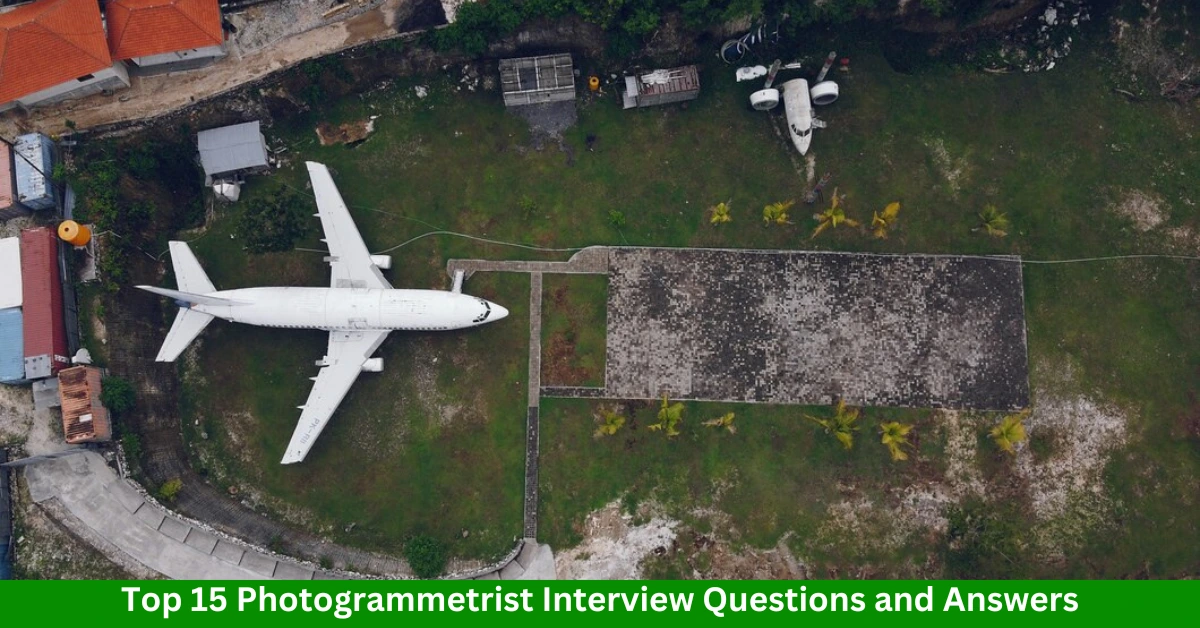Top 15 Photogrammetrist Interview Questions and Answers
If you’re preparing for a photogrammetrist job interview, knowing the right questions and how to answer them can make all the difference. Photogrammetry is a specialized field that requires a combination of technical knowledge, problem-solving skills, and attention to detail. To help you stand out, we have compiled the top 15 photogrammetrist interview questions and answers. Photogrammetrist Interview Questions and Answers 1. What is Photogrammetry? Answer: Photogrammetry is the science and technology of obtaining reliable information about physical objects and the environment through the process of recording, measuring, and interpreting photographic images. It is commonly used in mapping, surveying, and 3D modeling. 2. Can you explain the difference between Aerial Photogrammetry and Terrestrial Photogrammetry? Answer: Aerial Photogrammetry involves taking photographs from an aircraft or drone to create maps or 3D models of large areas. Terrestrial Photogrammetry uses ground-based photographs to analyze and measure smaller areas or specific objects. 3. What are some common applications of Photogrammetry? Answer: Photogrammetry is used in various fields, including: Mapping and cartography Construction and civil engineering Archaeology Environmental monitoring Forestry and agriculture Video game and movie production (for 3D modeling) Read Also: 15 Best Transportation Analyst Interview Questions and Answers 4. What software tools are commonly used in Photogrammetry? Answer: Popular photogrammetry software tools include: Agisoft Metashape Pix4D DroneDeploy Trimble Inpho Bentley ContextCapture 5. How do you ensure accuracy in Photogrammetric projects? Answer: Accuracy can be ensured through: Proper calibration of cameras and equipment Using high-resolution images Applying ground control points (GCPs) Performing rigorous quality checks and validation 6. What is a Ground Control Point (GCP), and why is it important? Answer: A Ground Control Point is a physical point on the ground with known geographic coordinates. GCPs are crucial for aligning photogrammetric data with real-world locations, improving the accuracy of the final models or maps. Read Also: 15 Best Utility Mapping Specialist Interview Questions and Answers 7. How would you handle image distortions in Photogrammetry? Answer: Image distortions can be corrected by: Calibrating the camera to account for lens distortion Using photogrammetry software’s built-in correction tools Ensuring proper alignment of images during processing 8. Explain the concept of Bundle Adjustment in Photogrammetry. Answer: Bundle Adjustment is an optimization process used to refine 3D coordinates by minimizing errors between observed and projected image points. It adjusts the camera parameters and 3D points simultaneously to improve accuracy. Read Also: 10 Best Universities in Canada for 2025 9. What are Orthophotos, and how are they created? Answer: Orthophotos are geometrically corrected aerial photographs where distortions due to terrain and camera tilt are removed. They are created by processing raw images with photogrammetry software, often using digital elevation models (DEMs) for correction. 10. Can you describe the workflow for a Photogrammetry project? Answer: The typical workflow involves: Image acquisition (e.g., aerial or terrestrial photographs) Data preprocessing (e.g., geotagging, calibration) Image alignment 3D point cloud generation Model creation (e.g., DEMs, orthophotos, or 3D meshes) Validation and accuracy assessment Read Also: Top 15 Drone Operator and Analyst Interview Questions and Answers 11. What challenges have you faced in a Photogrammetry project, and how did you overcome them? Answer: Challenges may include poor image quality, lack of GCPs, or processing large datasets. Solutions involve: Reshooting images with better lighting conditions Using artificial GCPs Employing high-performance computing resources for processing 12. What is Stereoscopy, and why is it significant in Photogrammetry? Answer: Stereoscopy involves using two overlapping photographs to create a 3D perception of depth. It’s significant in photogrammetry for measuring distances and creating accurate 3D models. 13. How does LiDAR compare with Photogrammetry? Answer: LiDAR uses laser pulses to measure distances, while photogrammetry relies on images. Photogrammetry is generally more cost-effective and produces photo-realistic models, whereas LiDAR excels in capturing detailed elevation data in challenging environments. Read Also: Top 15 Hydrologist Interview Questions and Answers 14. What are the key qualities of a successful Photogrammetrist? Answer: A successful photogrammetrist should possess: Strong analytical and problem-solving skills Attention to detail Proficiency with photogrammetry software Knowledge of surveying and GIS principles 15. How do you stay updated with advancements in Photogrammetry? Answer: I stay updated by: Attending industry conferences and workshops Reading journals like the Photogrammetric Engineering & Remote Sensing Participating in online forums and webinars Exploring new tools and technologies in the field Conclusion Preparation is the key to acing your photogrammetry interview. By understanding these common questions and crafting thoughtful answers, you can confidently demonstrate your knowledge and skills. Good luck with your interview! FAQs Q1. Is photogrammetry a good career choice? Answer: Yes, photogrammetry offers diverse career opportunities in industries like mapping, construction, and entertainment, with competitive salaries. Q2. What qualifications are needed to become a photogrammetrist? Answer: A degree in geography, geomatics, surveying, or a related field is typically required, along with proficiency in photogrammetry software. Q3. How long does it take to learn photogrammetry? Answer: Basic skills can be acquired in a few months, but mastering advanced techniques may take years of practice and experience.
